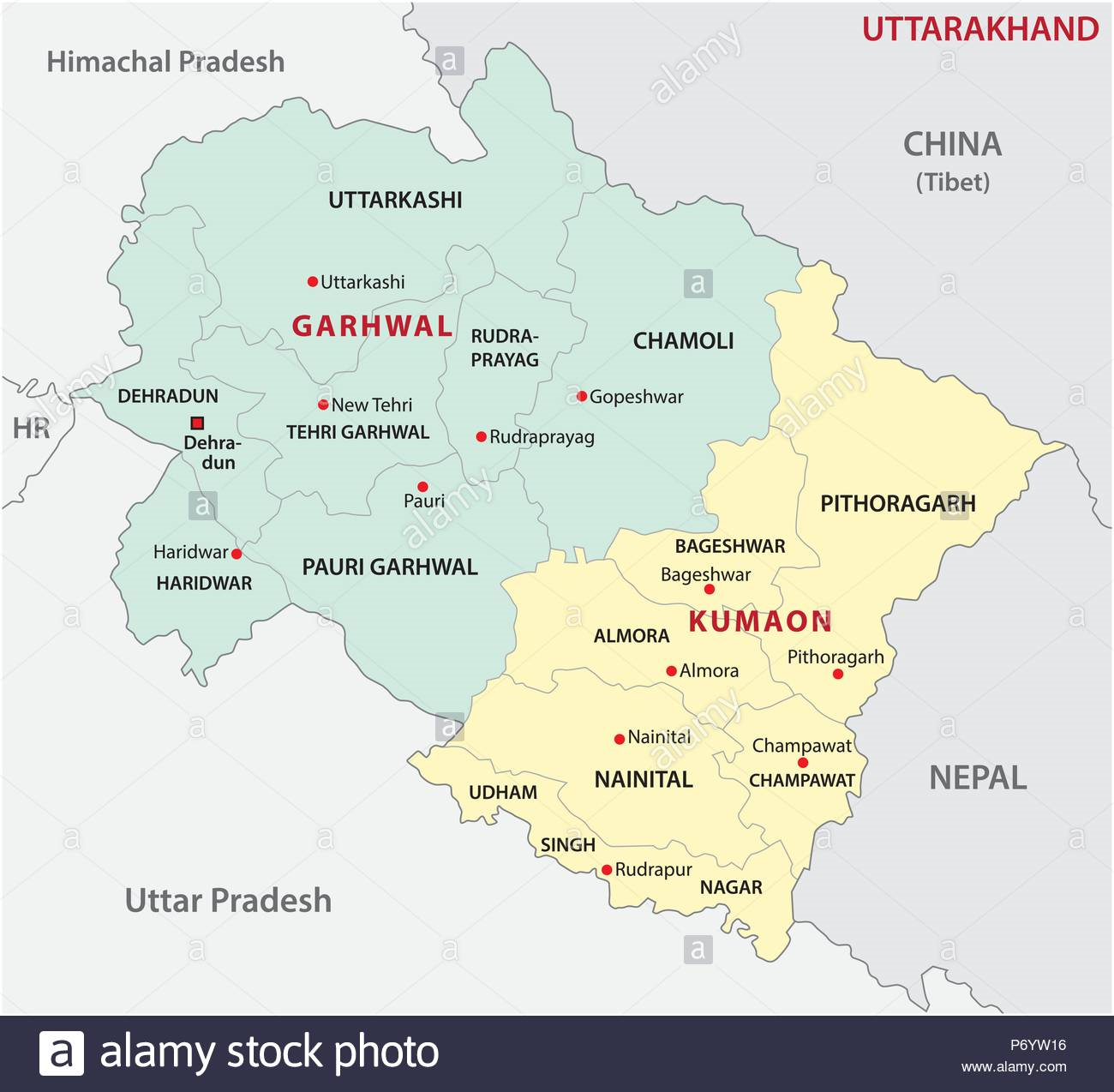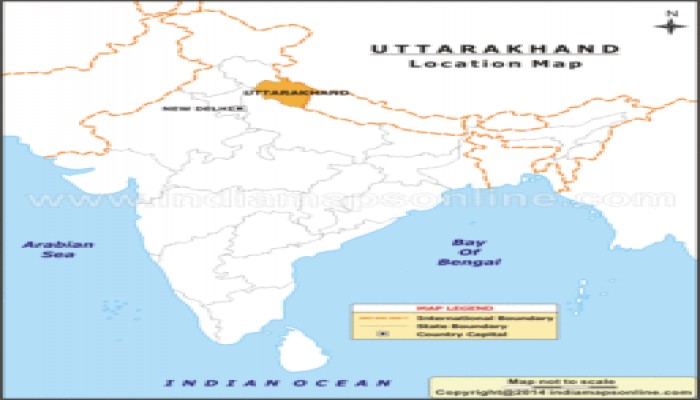Spring Shed Management in Garhwal Himalayan Region of Uttarakhand
- In Mathematics, Science & Technology
- 01:30 PM, Sep 17, 2020
- Deepali Gupta
INTRODUCTION
Springs have been providing water to both humans and ecosystems for thousands of years. Humans have been dependent on natural springs for centuries – both for sustaining life and agriculture. Cities, towns and settlements all tend to be located near a reliable source of groundwater, for the very obvious reason – survival of human race. There are about 5 million springs across India, of which nearly 3 million are in the Indian Himalayan Region alone. According to an estimate nearly 200 million Indians are dependent on spring water across regions and they can be aptly labelled as the ‘springscapes’ of India – mainly the Himalayas, Western Ghats, Eastern Ghats, Aravalli’s and other such mountain ranges – which implies that more than 15% of India’s population is dependent on spring water.
Springs, are the most important source of fresh water for millions of peoples in the Himalayan and other mountain region. Most of the rural as well as urban population are mostly dependent on springs for their household use as well as for drinking and irrigation purposes including rearing livestock.
Depletion of spring water, unfortunately, has led to the development of many unsustainable and impractical alternatives. People resort to immediate coping mechanisms like transporting water using pack animals, bicycles, motorcycles and tankers especially during the lean season or during prolonged dry spells in drought years. The drudgery of women is particularly worth mentioning here; when village spring dries up, women are forced to manually carry water from springs below their village during the lean season. In effect, the cost of inaction is mainly borne by rural mountain women who are already overburdened with firewood and fodder collection, household chores and as caregivers to the family and livestock.
Spring shed management has emerged as a ray of hope to mitigate spring water depletion in the Himalayas and is slowly spreading to the other ‘springscapes’ of India and its neighbourhood regions.
UTTARAKHAND - SCENARIO
Uttarakhand is known as the Garh-kumaon region, under this state three fourth of the mountainous land is wide, under which both the Garhwal and Kumaun divisions are included, covering the western part of the Himalaya.

Source: Google map
Springs are the lifeline of Uttarakhand for a majority of the people. The drying up of mountain springs which is considered lifelines for people in the hills, has worsened the problem of water shortage. Going by the UNDP’s estimate, about 260,000 springs provide 90% of the drinking water sources in the state. However, deforestation, reduction in temporal spread of rain, marked decline in winter rain and forest fires have affected spring catchments, resulting in reduced discharge from springs. But, unlike in case of naulas, local communities are not ruing about it; in fact, they are doing something about it.
Most of the drinking water supply in the mountainous parts of Uttarakhand is spring-based and approximately 50% of the mountain springs in the Indian Himalayan region, which includes Uttarakhand, are drying up and about 60 percent of the local people depend on springs for meeting their water requirements (NITI Aayog, 2018). As per a 2018 report of the Comptroller and Auditor General, Uttarakhand is among the states where less than 50% of the population had access to adequate quantities of safe drinking water. Despite the key role that they play, springs have not received their due attention and are today facing the threat to its existence.
There is increasing evidence that springs are drying up or their discharge is reducing throughout the Himalayas. Spring discharge is reported to be declining due to increased water demand, changing land use patterns, and ecological degradation. The Himalayan ecosystem is quite fragile and susceptible to several changes n caused by natural dynamism and anthropogenic interventions. The erratic rainfall pattern, seismic activity and ecological degradation associated with land use change for infrastructural development is putting huge pressure on mountain aquifer systems. Due to marked decline in winter rain, the problem of dying springs is being increasingly felt across the Indian Himalayan region. The water stress situation in the hills led to limited growth and development and caused severe ecological degradation. Drying of water supply sources now poses severe drinking water crisis in many parts of the Uttarakhand Himalaya. Per capita water availability status in some parts of Uttarakhand is likely to move from marginally vulnerable down to water scarcity.
SPRINGS AND THEIR CLASSIFICATION
Water is available to us through various sources like ocean, sea, river, lake, pond, underground water and springs and there is a serious need of conservation of all the sources.
Spring, a place where ground water naturally flows out to the surface, is the most important source of fresh water for millions of peoples in the Himalayan and other mountainous region.
A spring is an offshoot of an aquifer, (An aquifer is an underground layer of permeable rock or sand that collects, holds and conducts water. The materials act like underground sponges allowing water to flow very slowly through it. Water in the aquifer is called groundwater. Groundwater may naturally emerge from the aquifer as springs) being filled to the point that the water overflows onto the land surface.
A spring is a place where water moving underground finds an opening to the land surface and emerges, sometimes as just a trickle, maybe only after a rain, and sometimes in a continuous flow. Spring water can also emerge from heated rock underground, giving rise to hot springs, which people have found to make a delightful way of soaking away their problems.
FORMATION OF SPRINGS
The occurrence of springs is not limited to rocks of a particular age or type or to any specific geological or topographical settings. The diversity of springs is indicative of the wide array of geological and hydrological conditions which lead to their occurrence. Springs are dynamic and evolve and flow in response to changes in climatological, topographical, geological, and geomorphological conditions.
A spring is formed when the pressure in an aquifer causes some of the water to flow out of the surface. This usually happens at low elevations, along hillsides or at the bottom of slopes. Springs may be formed in any sort of rock. Both dolomite and limestone fracture relatively easily. When weak carbonic acid (formed by rainwater percolating through organic matter in the soil) enters these fractures it dissolves bedrock. When it reaches a horizontal crack or a layer of non-dissolving rock such as sandstone or shale, it begins to cut sideways. As the process continues, the water hollows out more rock, eventually admitting an airspace, at which point the spring stream can be considered a cave. This process often takes tens to hundreds of thousands of years to complete.
HYDROLOGICAL CYCLE

The hydrological cycle describes the continuous movement of water on the surface, above the surface and below the surface of the earth. Above the surface of the earth, water moves in the form of vapour. On the surface of the earth it flows in the form of glaciers, rivers and surface runoff. Below the surface of the earth, water seeps through the soil, cracks and pores in the rocks and finally exits through cracks or openings to form springs, streams or lakes. It is the circulation of the earth's water, in which water evaporates from the sea into the atmosphere, where it is condenses and falls as rain or snow into the ground. Again, water from snow or rain will return to the sea in the forms of rivers or it will return back to the atmosphere by evapotranspiration. The process is called water cycle or hydrological cycle.
NEED OF THE SPRINGSHED MANAGEMENT STUDY
The well-being of the current and the generations to come is dependent on maintaining the integrity of mountain ecosystems. Yet, Mountains have low resilience and high vulnerability, and are therefore; under serious threat of drying springs and streams on which local population depends. Soil degradation, siltation and climate change are the other challenges faced by the mountain regions. The maintenance and restoration of mountain ecosystem requires long term micro-level monitoring and action. Stream conservation or spring shed Management approach is one of the vital ways of maintenance and restoration.
Springhead approach basically means conservation and management of springs for a long sustainability of spring’s water in order to increase water security of many people residing in hilly regions. It combines all three aspects including scientific part of understanding springs hydrogeology, groundwater management and community participation.
Spring shed management is an integral part to look in the development of such mountainous regions. The first systematic initiative was undertaken through the Dhara Vikas Programme by the Rural Management and Development Department, RM&DD, Government of Sikkim, even as smaller, deeply incisive pilots using the same concept were being undertaken in Himachal Pradesh, Uttarakhand and Nagaland.
The need is to initiate a project on rejuvenating of drying springs through environmentally friendly engineering tested water recharge techniques which recharge ground water through rainfalls, control floods, check sedimentation and provide regular water supply for consumption and for irrigation purposes to the local villagers. It is well known fact that there is growing demand for water in the villages, when the springs have water, gravity based water supply systems ensure piped water supply to the homes but when the springs above the village dry up, women have to manually carry water from springs located downhill, therefore, my target would be to work on the local springs.
REFERENCES
DAHAL, N.; 1998. Rural mountain community of Rampur Village in east Nepal shares success story of catchment management., In Understanding Vulnerability – South Asian Perspectives. (Eds.)
Ravnborg, H.M., Guerrero, M.d.P. Collective action in watershed management -- experiences from the Andean hillsides. Agriculture and Human Values 16, 257–266 (1999).
Ma Xing, Xu Jianchu, and Qian Jie "Water Resource Management in a Middle Mountain Watershed," Mountain Research and Development 28(3), 286-291, (1 August 2008).
ACWADAM, RM&DD. 2011: (Mahamuni, K. and Kulkarni, H., prin. authors). Hydrogeological Studies and Action Research for Spring Recharge and Development and Hill-Top Lake Restoration in Parts of Southern District, Sikkim State. Advanced Center for Water Resources Development and Management and Rural Management and Development, Government of Sikkim, Submitted to GIZ, India. ACWA/Hydro/2011/H-20.
K mahamuni, H kulkarni. (2012) Groundwater resources and spring hydrogeology in South Sikkim, with special reference to climate change. Advanced Center for Water Resources Development and Management, Pashan
S Tambe. Et al. (2013) Rural Water Security in the Sikkim Himalaya: Status, Initiatives and Future Strategy. Mountain Research and Development 32 (1), 62-72
Dhara Vikas Handbook 2nd Edition, November, 2014
Pradhan, Nawraj. (2015). An Integrated Springshed Management Approach Linking Science, Policy, and Practice.
ML Rijal - Bulletin of Nepal Geological Society, 2016 - ngs.org.np
KAUSHIK, T. (2016). STUDY ON WATER SUPPLY SYSTEMS IN RURAL UTTARAKHAND FOCUSSING ON MOUNTAIN SPRINGS OF TEHRI GARHWAL DISTRICT (Doctoral dissertation, TERI University).
Ghose B. et al. (2018) Peoples’ Participation for Sustainable Groundwater Management. In: Saha D., Marwaha S., Mukherjee A. (eds) Clean and Sustainable Groundwater in India. Springer Hydrogeology. Springer, Singapore
Upreti, P., & Panwar, M. S. Land use dynamics, development and management of Kangsali Gaadh micro watershed for sustainable livelihood in Uttarakhand, India.
Buono J. et al. (2019) Spring Protection and Management: Some Case Histories from Across India’s Mountainous Regions. In: Ray S. (eds) Ground Water Development - Issues and Sustainable Solutions. Springer, Singapore
Petrishchev, V.P., Sivokhin, Z.T. & Chibilev, A.A. Geographical Conditions for Formation of Spring Flow in the Transvolga-Ural Region. Geogr. Nat. Resour. 40, 46–53 (2019).
Green, Jeffrey & Alexander, Scott & Alexander Jr, E. (2005). Springshed Mapping in Support of Watershed Management. Geotechnical Special Publication. 403-409. 10.1061/40796(177)43.
Maikhuri R.K. et al. (2019) Community Response and Adaptation to Climate Change in Central Himalaya, Uttarakhand, India. In: Garkoti S., Van Bloem S., Fulé P., Semwal R. (eds) Tropical Ecosystems: Structure, Functions and Challenges in the Face of Global Change. Springer, Singapore
All the images are provided by the author.







Comments